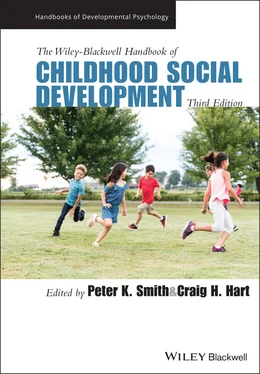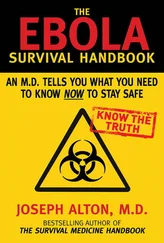In closing, it should be noted that there is a tendency both within the existing research literature on parenting and bullying discussed, and in the practitioner case formulation approaches described in this chapter, to focus more predominantly on the closer ecological settings (such as the micro‐ and mesosystem) and put less emphasis on the more distant influences (in the exo‐, macro‐, and chronosystem) in social development. This is understandable due to these having the most direct and visible effects on the everyday life of children and young people, and arguably presenting more tangible opportunities for direct intervention. From a practical standpoint, it is trickier to research the effect of the outer systems directly, or to influence change within them. However, changes at these levels could potentially have a significant impact on more people, so it would be recommended that there is increased attention on the exo‐, macro‐ and chronological systems in future research, and in the approaches used to address social difficulties.
After introducing the core components of ecological perspectives, we have examined how these can be used to understand social development. Focused examples of parenting and attachment, and bullying were studied to illustrate the application of ecological perspectives to domains of social development. The implications for both research and practice arising from adopting an ecological lens have also been considered. In conclusion, it is argued that there is genuine value in adopting ecological perspectives for social development and we run the risk of neglecting the crucial role of context otherwise. The world is constantly changing, and ecological perspectives can help to make sense of both the similarities and differences that we see between people and understand the way that individual and social circumstances influence who people are, who they become, and the complex processes involved. They also provide a framework for interpreting difficulties in social development that can be used in professional practice with children and young people.
1 Barker, R. G. (1968). Ecological psychology: Concepts and methods for studying the environment of human behavior. Stanford University Press.
2 Beaver, R. (2011). Educational psychology casework: A practice guide (2nd ed.). Jessica Kingsley.
3 Benedetto, L., & Ingrassia, M. (2020). Digital parenting: Raising and protecting children in media world. IntechOpen. http://dx.doi.org/10.5772/intechopen.92579
4 Bornstein, M. H., Putnick, D. L., Heslington, M., Gini, M., Suwalsky, J. T. D., Venuti, P., de Falco, S., Giusti, Z., & Zingman de Galperin, C. (2008). Mother‐child emotional availability in ecological perspective: Three countries, two regions, two genders. Developmental Psychology, 44(3), 666–680.
5 Bouchard, K. L., & Smith, J. D. (2017). Teacher–student relationship quality and children’s bullying experiences with peers: Reflecting on the mesosystem. The Educational Forum, 81(1), 108–125.
6 Bowlby, J. (1969). Attachment and loss: Vol. 1. Attachment. Basic Books.
7 Bowlby, J. (1982). Attachment & loss: Vol. I. Attachment (2nd ed.). Basic Books.
8 Bradshaw, J., Crous, G., Rees, G., & Turner, N. (2017). Comparing children’s experiences of schools‐based bullying across countries. Children and Youth Services Review, 80, 171–180.
9 Brendgen, M., & Poulin, F. (2018). Continued bullying victimization from childhood to young adulthood: A longitudinal study of mediating and protective factors. Journal of Abnormal Child Psychology, 46(1), 27–29.
10 Bronfenbrenner, U. (1979). The ecology of human development: Experiments by nature and design. Harvard University Press.
11 Bronfenbrenner, U. (1989). Ecological systems theory. Annals of Child Development, 6(1), 187–249.
12 Bronfenbrenner, U. (1993). The ecology of cognitive development: Research models and fugitive findings. In R. H. Wozniak & K. Fischer (Eds.), Development in context: Acting and thinking in specific environments (pp. 3–44). Erlbaum.
13 Bronfenbrenner, U. (1995). Developmental ecology through space and time: A future perspective. In P. Moen, G. H. Elder, & K. Lüscher (Eds.), Examining lives in context: Perspectives on the ecology of human development (pp. 619–647). American Psychological Association.
14 Bronfenbrenner, U., & Evans, G. W. (2000). Developmental science in the 21st century: Emerging questions, theoretical models, research designs and empirical findings. Social Development, 9(1), 115–125.
15 Bronfenbrenner, U., & Morris, P. A. (2006). The bioecological model of human development. In W. Damon (Series Ed.), & R. M. Lerner (Vol. Ed.), Handbook of child psychology: Theoretical models of human development (pp. 793–828). Wiley.
16 Chase, E. (2019). Rethinking the marginalization discourses around teenage pregnancy. Discourse: Studies in the Cultural Politics of Education, 40(4), 560–572.
17 Coyne, S. M., & Archer, J. (2004). Indirect aggression in the media: A content analysis of British television programs. Aggressive Behavior, 30(3), 254–271.
18 Coyne, S. M., Archer, J., & Eslea, M. (2004). Cruel intentions on television and in real life: Can viewing indirect aggression increase viewers’ subsequent indirect aggression? Journal of Experimental Child Psychology, 88(3), 234–253.
19 Divecha, D., & Brackett, M. (2020). Rethinking school‐based bullying prevention through the lens of social and emotional learning: A bioecological perspective. International Journal of Bullying Prevention, 2(2), 93–113.
20 Elder, G. H., Jr. (1974). Children of the Great Depression: Social change in life experience. University of Chicago Press.
21 Elder, G. H. (1995). The life course paradigm: Social change and individual development. In P. Moen, G. H. Elder, & K. Lüscher (Eds.), Examining lives in context: Perspectives on the ecology of human development (pp. 101–139). American Psychological Association.
22 Elder, G. H. (1998). The life course as developmental theory. Child Development, 69(1), 1–12.
23 Espelage, D. L., Rao, M. A., & De La Rue, L. (2013). Current research on school‐based bullying: A social‐ecological perspective. Journal of Social Distress and the Homeless, 22(1), 7–21.
24 Gabriel, N. (2017). The sociology of early childhood: Critical Perspectives. Sage.
25 Gibson, J. J. (1979a). The ecological approach to visual perception. Houghton Mifflin.
26 Gibson, J. J. (1979b). The theory of affordances. Reprinted in J. J. Gieseking, W. Mangold, C. Katz, S. Low, & S. Saegert (Eds.). (2014), The people, place, and space reader (pp. 56–60). Routledge.
27 Hale, R., Fox, C. L., & Murray, M. (2017). “As a parent you become a tiger.” Parents talking about bullying at school. Journal of Child and Family Studies, 26(7), 2000–2015.
28 Harcourt, S., Jasperse, M., & Green, V. A. (2014). “We were sad and we were angry”: A systematic review of parents’ perspectives on bullying. Child & Youth Care Forum, 43(3), 373–391.
29 Harney, P. A. (2007). Resilience processes in context. Journal of Aggression, Maltreatment & Trauma, 14(3), 73–87.
30 Heft, H. (2013). An ecological approach to psychology. Review of General Psychology, 17(2), 162–167.
31 Hendrickx, M. M. H. G., Mainhard, M. T., Book‐Klip, H. J., Cillessen, A. H. M., & Brekelmans, M. (2016). Social dynamics in the classroom: Teacher support and conflict and the peer ecology. Teaching and Teacher Education, 53, 30–40.
32 Hong, J. S., & Espelage, D. L. (2012). A review of research on bullying and peer victimization in school: An ecological system analysis. Aggression and Violent Behavior, 17(4), 311–322.
33 Hong, J. S., & Garbarino, J. (2012). Risk and protective factors for homophobic bullying in schools: An application of the social‐ecological framework. Educational Psychology Review, 24(2), 271–285.
Читать дальше












